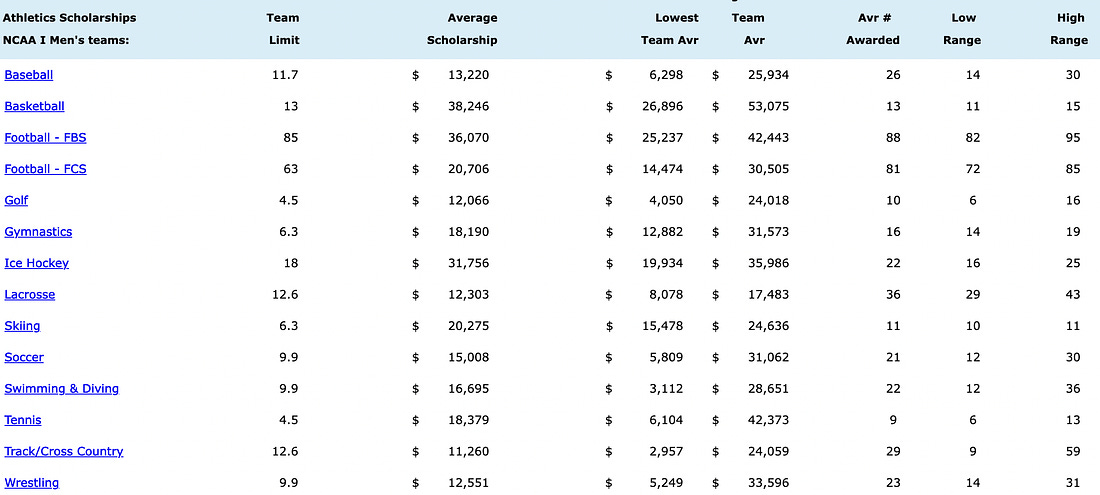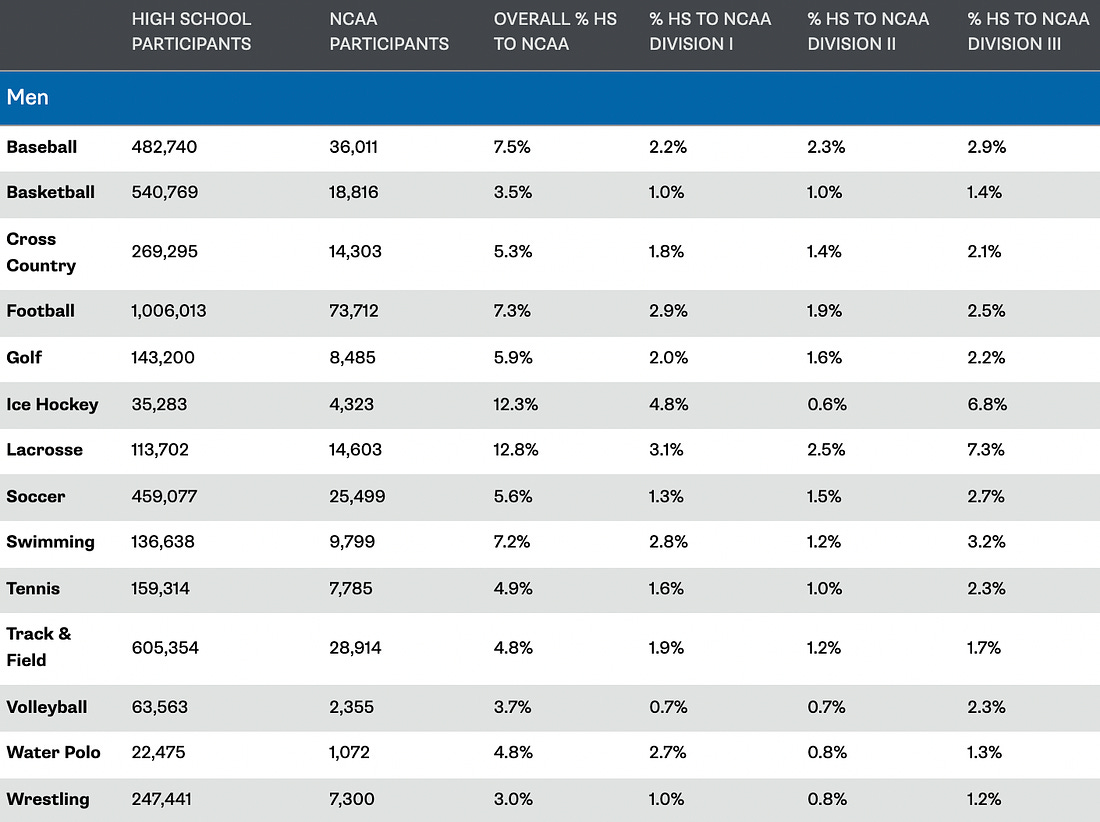The value of athletic scholarships continue to increase year over year.
Higher tuition costs, rising inflation, and more athletes competing for fewer spots are fueling this growth.
It’s a massive market that saw over $4.23B in balance sheet value during 2020.
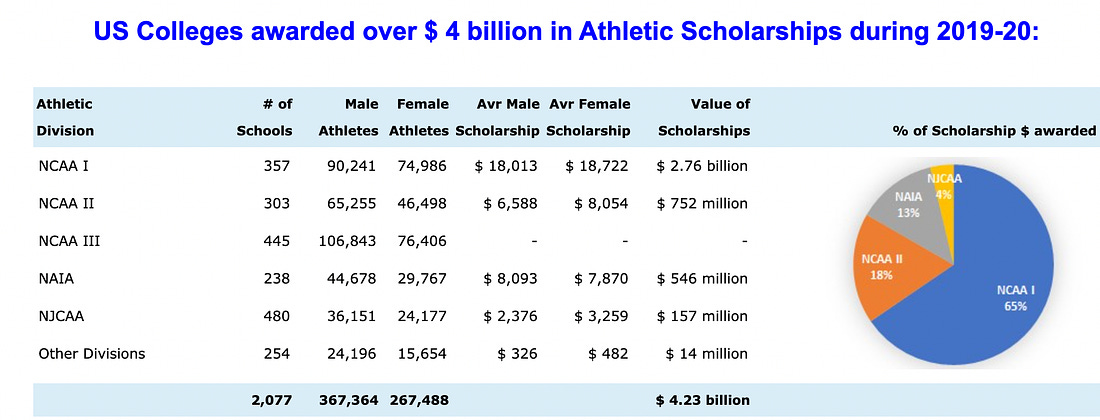
But very few people understand the intricacies behind athletic scholarships and financial aid.
For example, Division III schools can’t offer athletic scholarships, but many offer generous financial aid packages that are worth more than what an athlete would get from an athletic scholarship.
Let’s dive in to it.
The Almighty Athletic Scholarship
An athletic scholarship is a form of financial aid to attend a university awarded to an individual based predominantly on his or her ability to play a sport.
It is funded by the college athletic department and distributed by the college coaches.
Athletic scholarships are common in the United States, but in most countries they are rare or non-existent.
Every sport offers a different amount of scholarships.
Men’s NCAA Division 1:
Women’s NCAA Division 1:
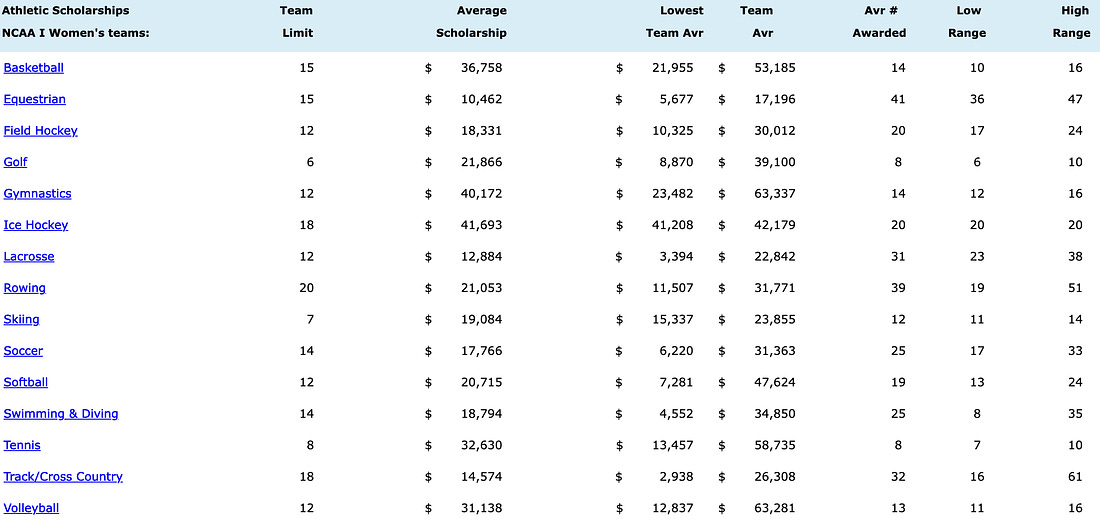
The types of scholarships:
There are two types of athletic scholarships at the collegiate level.
Head Count and Equivalency.
Head Count Scholarships:
This is the NCAA vocabulary for a full-ride scholarship.
Sports that generate revenue are considered head count sports.
The head count sports are:
- men’s and women’s basketball
- FBS football
- women’s volleyball, tennis, and gymnastics
If a football program has a total of 85 scholarships, then only 85 football players can be on a full scholarship at any given time.
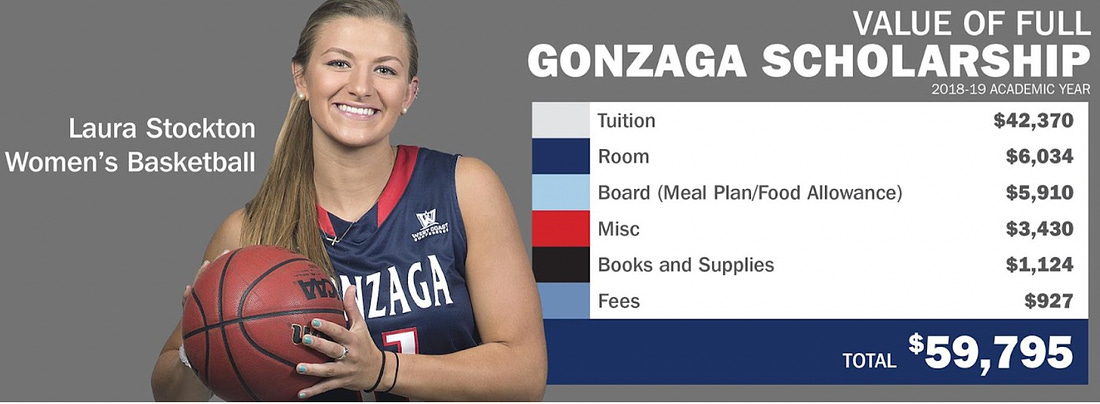
For head count sports, coaches are not allowed to divide up the money or provide “percentage” scholarships between players.
The “Equivalency” Scholarship
Any sport that’s not a head count sport is considered “non-revenue” and is referred to as an “equivalency sport” by the NCAA.
Equivalency sports have fewer scholarships to offer and offer percentage based scholarships. These often take the form of a partial scholarship.
Full rides are rarely given in equivalency sports, but many coaches provide some scholarship money to most players on the team.
Equivalency Scholarship Example:
A college baseball coach has a scholarship limit of 11.7.
The coach needs to spread those 11.7 scholarships among the 36 players on his roster. To do that, the coach doles out partial scholarships that, when added up, are equivalent to 11.7 full rides.
For instance, the coach might offer a scholarship covering 90% of the costs for a star pitcher and divide the remaining 10% to cover books for two backup outfielders.
Or that coach could simply split the money for the equivalent of 11.7 scholarships in 36 ways and cover 32.5% of the costs for every player on the team.
Different Ways Coaches Use Equivalency Scholarships:
The equivalency scholarship possibilities are endless and can vary based on the sport, the coach’s preference, and how well funded the school is.
- All the money to the top athletes
- offer a full or almost full ride to the top athletes and fill rest of roster w/ preferred walk-ons
- popular in sports like baseball/softball where a few recruits can have a major impact
- offer a full or almost full ride to the top athletes and fill rest of roster w/ preferred walk-ons
- No scholarship money for underclassmen
- use scholarships as a reward to those who have been with the team
- performance + experience leads to scholarships down the road
- Divide scholarships as equal as possible
- popular in sports where you keep extra people on the roster and want a larger group of equally talented individuals
- bring in a large recruiting class and give the top performers a larger scholarship in future years
Not every athlete will be offered an athletic scholarship out of high school. But that doesn’t mean your athletic dreams have to come to an end.
A College Walk-On
A walk-on is an athlete who becomes part of a team without being awarded an athletic scholarship.
This results in the differentiation between “walk-on” players and “scholarship” players.
Some notorious walk-ons include:
- JJ Watt
- Baker Mayfield
- Scottie Pippen
- Stetson Bennett IV
- Andre Drummond
- Antonio Brown
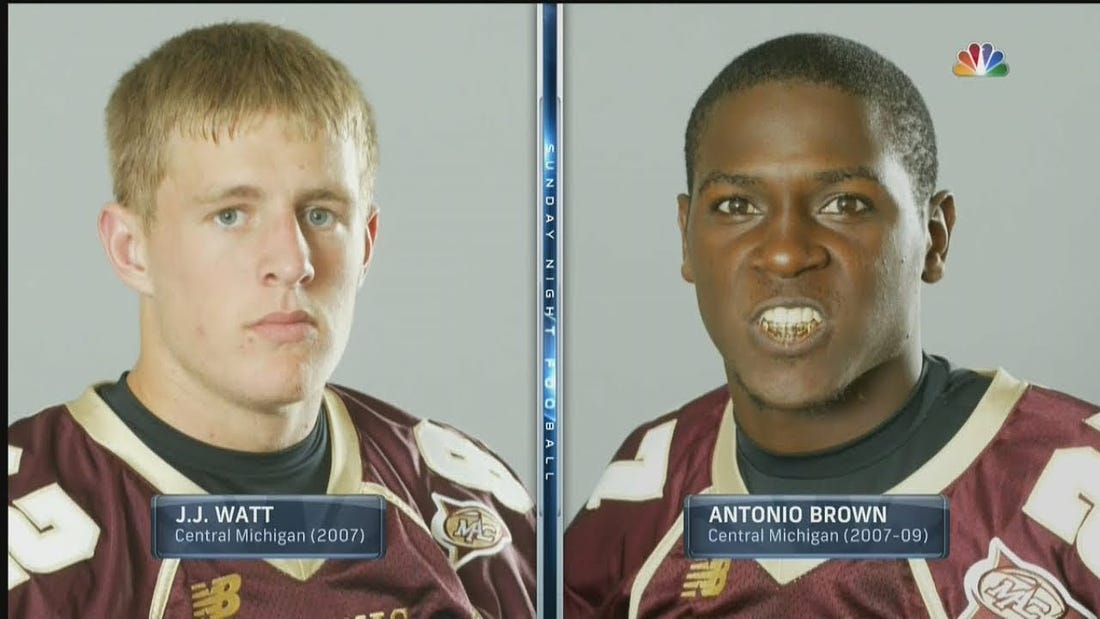
But did you know there are different types of walk-ons?And that one gives you a greater chance of success than others?
The 3 Types of Walk-Ons
1. Preferred Walk-On
- coach wants you on the team but can’t (or won’t) offer financial assistance
- can assist in getting you admitted to the university
- some players turn down scholarship spots for a preferred walk-on at a bigger school
2. Recruited Walk-On
- interest from the coach, but earn your spot through a tryout or camp
- some athletes view this as a great way to play at a higher level
3. Un-Recruited Walk-On
- qualify for admission to the school and go through a tryout
- talk with the coach before hand to coordinate tryout dates
Being a preferred walk-on has a lot more upside than the other two options.
Many athletes talk to coaches about this when going through the recruiting process and realizing no scholarship opportunities are left.
But what if you want to play at the Division 3 level that doesn’t offer any form of athletic scholarships?
Financial Aid in DIII Sports
Many people are surprised to find that DIII schools (and Ivy League institutions) can sometimes offer athletes more financial aid, than D1 or DII schools can offer in athletic scholarships.
Financial Aid is given using a tier system.
Here’s an example of how it works:
Let’s say you want to play at Division 3 University where tuition is $50,000 a year.
- Tier 1: Over 3.0 GPA: $20,000 in financial aid is immediately provided
- 2: 3.2 – 3.5 GPA: $20,000 + qualify for additional $10,000 off
- 3: 3.51 GPA – 3.99GPA: $20,000 + quality for additional $20,000
- Tier 4: Over 4.0 GPA: qualify for a full ride scholarship (interview process)
Your grades + test scores + interviews will determine how much financial aid you receive. This often referred to as merit based academic scholarships.
While division 3 schools don’t offer athletic scholarships, they can offer very generous financial aid packages.
You should also fill out a FAFSA form to earn additional money from the government.
The Road to College Sports
It’s no easy task to make it to any level of college sports.
Don’t believe me? Take a look at these graphs.

And it’s only getting harder as:
- the transfer portal gets larger
- international student-athletes increase
- NIL ramps up
I hope this article has been helpful in understanding the complexities of athletic scholarships and financial aid.


